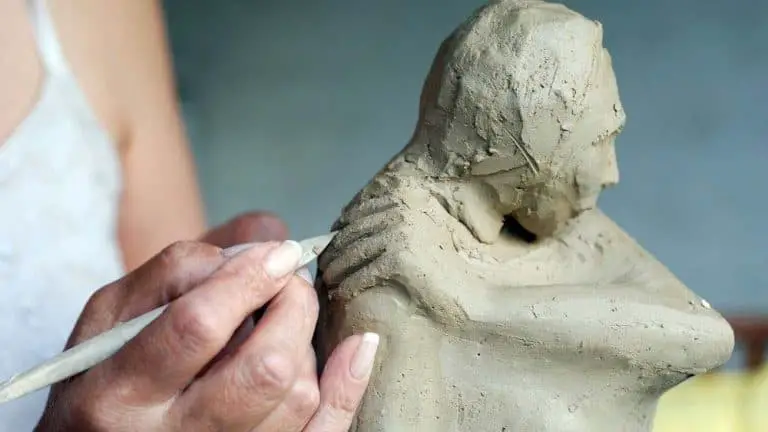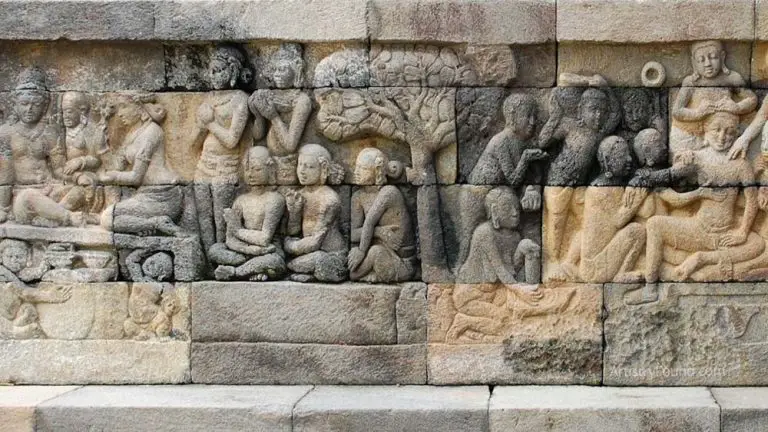Why Do Sculptures Have Nail Holes? (Explained!)
Sculpture is a powerful art form with a long history. From the tiniest marble or clay sculptures, to the largest three-dimensional designs, ancient sculptures provide a window into a specific period of time. However, have you ever noticed that many sculptures have tiny little nail holes in them?
Sculptures have nails in them to serve as precise reference points for the sculptor. The nails are placed similar distances apart to determine the exact depth and spacing the sculptor needs to chisel. Nails are visual tools that help sculptors achieve the correct dimensions for the sculpture.
There are many beautiful sculptures in the world dating as far back as 30,000 BC! It is truly amazing that sculptures can last so long in the right conditions, allowing people today to view artwork from so long ago. Read on to learn all there is to know about why sculptures have nails in them and how the nails are used.

(This article may contain affiliate links and I may earn a commission if you make a purchase)
Where Are Nails in Sculptures?
If you visited an art exhibit recently, you might have noticed a sculpture that had tiny holes all over its surface. Wondering where the holes came from, you could have hypothesized they were caused by corrosion, rain, or another form of damage. However, the holes actually have a pattern.
- The holes are spaced evenly
- The holes are the same diameter
- The holes appear to be the same depth
What gives? The holes are actually from nails that the sculptor used as reference points when they created the sculpture. Once the sculpture was completed, the nails were removed, leaving behind holes. If you do happen to see a sculpture with nails still in it (which is very rare), it means the sculpture is unfinished.
The Pointing Technique: How Are Nails Inserted in Sculptures?
If you guessed that the nails are inserted into the sculptures with a hammer, you guessed wrong. Well, mostly wrong. The nails are inserted into sculptures using a nifty device called a pointing machine. It was perfected by the famous Italian sculptor Antonio Canova in the 1700s and used a nail as its main measurement mechanism.
The pointing machine is a measuring tool that is made up of small rods, beams, and joints that can be set up to measure and gauge the sculptor’s reference material. The pointing machine contains a needle or nail.
After using it on the reference material, it can be placed into a fixed position on the sculpting material (i.e., the block of marble or stone). Pointing machines with nails are used by both sculptors and woodcarvers for the same reasons:
- To measure reference models (people, objects, etc.)
- To copy reference models onto wood or stone
Once the pointing machine is placed on the sculpting material, it is carefully drilled to the correct depth as dictated by the pointer or nail. The nail is then inserted into the hole to ensure the correct depth is achieved. Next, the material is chipped away to the proper depth illustrated by the nail.
Filling In and Removing the Nail Holes on Sculptures
For sculptors to get accurate pointing on their sculptures and depict their subjects realistically, many points have to be used. This is especially true for complicated sculptures, like life-sized sculptures of people. So, what happens to all of those nail holes when the sculptures are finished?
If the sculpting materials are stone:
- The stone is cutaway or chiseled to the correct depth
- The surfaces are worked down in small sections
- They are rubbed down with coarse abrasives, then smoothed with finer abrasives
- They are smoothed down completely flat and polished
If the sculpting materials are wood:
- The wood is chipped away to the correct depth
- The surfaces are also worked on in small sections
- They are then smoothed down evenly with sandpaper
- They are waxed or oiled to achieve nice finishes
Often, only the plaster sculptures have visible nail holes left in them since they are just visual reference pieces for the final sculptures.
Plaster Sculptures with Nails
If the sculpture is made from plaster casts or entirely made of plaster, it will be covered in many nail holes. Sculptors typically make the plaster sculpture models before they begin carving into huge blocks of stone. The plaster is easy to work with, and errors can be fixed easily.
(Note: When my wife Wendy and I visited Italy and Greece, we saw many of these plaster reference sculptures, full of nail holes. It was amazing that so many of these reference sculptures still exist!)
If a sculptor were to just start on a stone block first and mess up, they would need to start from scratch. The block of stone would potentially be wasted.
Once a plaster sculpture is completed, the dimensions are transferred from the plaster sculpture to the stone block with the pointing tool. The nail on the pointing tool is used as the pointer to get the reference distance so that depth is transferred correctly.
Plaster sculptures save sculptors from destroying valuable stone sculpting material like marble. The cheap plaster is easily molded into the correct dimensions before transferring those to the marble. Any mistakes the sculptor makes can be fixed on the plaster version and will not ruin the marble.
The Pointing Machine Explained
Many sculptors use the pointing machine. There are different variations of this machine, but most include the following components.
- Three fixing mechanisms (such as screws)
- A wooden or brass frame
- Three brass or stainless rods
- Three joints that can be tightened after capturing a measurement
- One long nail on a slider that can be adjusted to various lengths
All the joints and rod angles are fully adjustable. Once it is applied to the reference base (copy plaster, clay, or wax model), all the joints and the nails are tightly secured, so they cannot move.
Then, the pointing machine is transferred to the wood or stone block the sculptor is working with. The sculptor will then use it to make a 1-to-1 scale replica of the reference material! They will take multiple measurements and use a manual drill to get the nail to the sculpting material’s proper depth.
Lastly, the sculpture is refined down to the proper depth with other tools such as chisels and grinding blocks.
Sculptures with Nail Holes
If you love visiting art galleries and museums, you may have stumbled across a sculpture that has nail holes. Using the pointing technique is a common method in creating sculptures. If you have not seen any sculptures with nails in real life and you want to, check out some of the below sculptures:
- “Eve Tempted” sculpture by Hiram Powers at the Smithsonian Art Museum
- Multiple sculptures at the Gipsoteca Bartolini in the Accademia Gallery in Florence, Italy
- “Niccolò Machiavelli” by Lorenzo Bartolini in Florence, Italy (outside of the Uffizi Gallery)
- “Filippo Brunelleschi” sculpture by Luigi Pampaloni also in Florence, Italy, at the Piazza del Duomo
- Many of Arnolfo di Cambio’s sculptures at the Piazza del Duomo in Florence, Italy
As you can see, if you ever get around to attending an art tour in Italy, you can see many sculptures with nail holes in person. You will be able to see multiple sculptures that had nails in them just in the city of Florence, alone! Experience all that Italy has to offer (Expedia) in addition to your hole-y sculpture scavenger hunt!
Conclusion
Now you know exactly why some sculptures have nail holes. On your next outing at the museum, be sure to take some friends to the sculpture hall.
There you’ll be able to point out a sculpture that has nails in it and explain the sculpting process and why the pointing technique was used. Fill them in on why those nail holes are not filled in! They’ll be so impressed!





